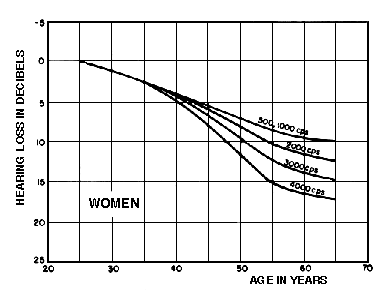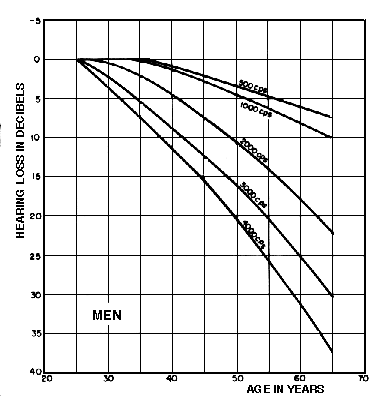Also spelled presbycousis, presbyacusis. The condition of HEARING LOSS specifically ascribed to aging effects. The greatest loss takes place in the higher FREQUENCY range, as shown on the graph.
See: AUDIOGRAM, HEARING LEVEL. See also: ORGAN OF CORTI, PINNA, RESIDUE, SIBILANCE, TRANSIENT.
The question of whether this loss may be ascribed to noisy modern living conditions, rather than to natural aging effects, has been controversial, particularly since Samuel Rosen's publication, "Presbycusis Study of a Relatively Noise-Free Population in the Sudan," American Otological Society, Transactions, vol. 50, 1962, pp. 135-152. Rosen discovered almost no signs of presbycusis among the Mabaan tribe of the Sudan and attributed this to their quiet living environment and generally healthy condition.
Compare: ACOUSTIC TRAUMA, HYPERACUSIS, NOISE POLLUTION, OCCUPATIONAL DEAFNESS, RECRUITMENT, SENSORY-NEURAL HEARING LOSS, SOCIOCUSIS, THRESHOLD SHIFT, TINNITUS.


Presbycusis curves for women and men, showing the average threshold shift for pure tones as a function of age (from ASA Subcommittee Z24-X-2, "The Relations of Hearing Loss to Noise Exposure," New York, 1954, pp.16-17).
home